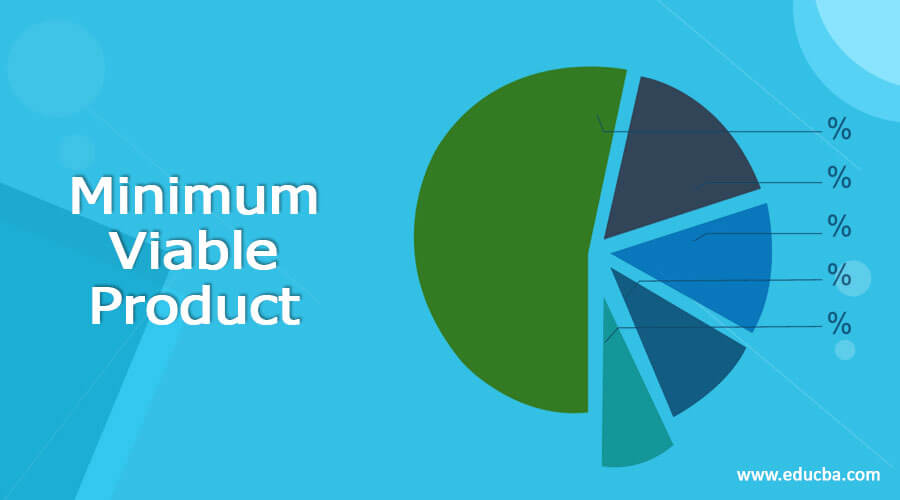Updated July 10, 2023
What is a Minimum Viable Product?
The term “minimum viable product” refers to the early launch version of a product that has been created with the least effort and has the basic features required to gain customers.
In addition, these early adopters or customers provide feedback for fine-tuning the initial idea into a full-fledged product through a series of iterations. The term “minimum viable product” was coined by Frank Robinson in 2001 and later popularized by Eric Ries and Steve Blank.
Purpose of Minimum Viable Product
A minimum viable product fulfills the following purposes:
- It is relatively cheaper to create a minimum viable product and an economical product launch approach for early-stage companies.
- A minimum viable product protects the companies against the risk of product failure as the product is developed based on customer feedback.
- It is an agile approach that condenses the time taken for product development, which is the time between conception and the product launch in the market.
- The sales and marketing team can use the unfiltered pool of knowledge acquired from customer feedback to create laser-sharp marketing strategies.
Characteristics of Minimum Viable Product
Some of the main characteristics are as follows:
- The minimum set of features solves a seriously nagging customer problem. In short, it offers basic and very useful features.
- It is available to early adopters at affordable and attractive pricing.
- From the inception stage, the early adopters provide as much feedback as possible, which the product team uses to develop the final product.
- Launching a minimum viable product is done with a limited budget for a restricted audience.
Examples of Minimum Viable Product
Let us look at real-life examples to understand the prevalence of minimum viable products as a concept.
1. Facebook
When its initial release, Facebook was a simple social media tool used to connect with friends, the profiles were very basic, and the product was only available to the students of Harvard University. However, once the product gained popularity, more and more complex features were gradually added to the platform.
2. Airbnb
Airbnb was started in the founders’ apartments. At that time, it offered people the option to list their room for short-term rental. However, over time, it came out clearly that travelers had no problem staying in someone else’s home as they could save money on accommodation. This knowledge was leveraged to expand the platform gradually.
3. AdWords Express
AdWords Express was launched to customers with the perception that it was automating ad copy. However, the truth was that a team of students worked at the backend, typing the ads quickly and delivering them to the customers. Once the target audience liked the idea, the actual automated process was developed in the form of AdWords Express.
How to Define a Minimum Viable Product?
A minimum viable product can be defined as a product development technique in which a new product is initially built with sufficient features that can satisfy the initial users. However, the final product has a complete set of features, designed and developed based on the feedback received from the users.
Uses of Minimum Viable Product
The early-stage companies use minimum viable products to assess potential customers’ feelings about the idea. The initial product has minimal effort and resources invested in its creation. So, if the product fails to appeal to the customers, then these products can be stopped immediately without any significant loss. On the other hand, if the product performs well, they can use the user feedback to incorporate gradual improvement in every subsequent product version.
Benefits of Minimum Viable Product
Some of the major benefits are as follows:
- It helps focus on the core idea while excluding other frivolous functions during the key development phase.
- Early testing helps determine the assumptions from the start without spending the entire budget.
- It helps in finding out whether or not the product performance is suitable for the target audience.
- It takes far less time to build a basic product with minimal functionality. In this way, it accelerates the product development process while also leading to lower costs.
Disadvantages of Minimum Viable Product
Some of the major disadvantages are as follows:
- It requires a lot of hard work upfront to attract positive feedback from the target customers. Hence, each product release can be a tedious task to perform.
- The customer feedback may result in multiple revisions to the product, which may take more time and effort.
- Given that the product is started with fundamental features, the customer feedback may result in small and frequent incremental changes during every product release.
Key Takeaways
Some of the key takeaways of the article are:
- Minimum viable product refers to the launch version of a product with a basic set of features required to gain customers at the initial stage.
- The product team responds to feedback and iterates several times to create multiple versions. This way, the final product is developed based on a user feedback loop for continuous improvement.
- It has enough value that customers are willing to pay for it and, at the same time, demonstrates enough future benefits.
Conclusion
So, It is a sturdy launch pad used by early-stage companies to test the value of their product idea, learn more about customer needs, and improve product quality. If used wisely, then it can lead to the launch of a thriving final product.
Recommended Articles
This is a guide to Minimum Viable Products. Here we also discuss the definition, purpose, characteristics, examples, and uses, along with benefits and disadvantages. You may also have a look at the following articles to learn more –


